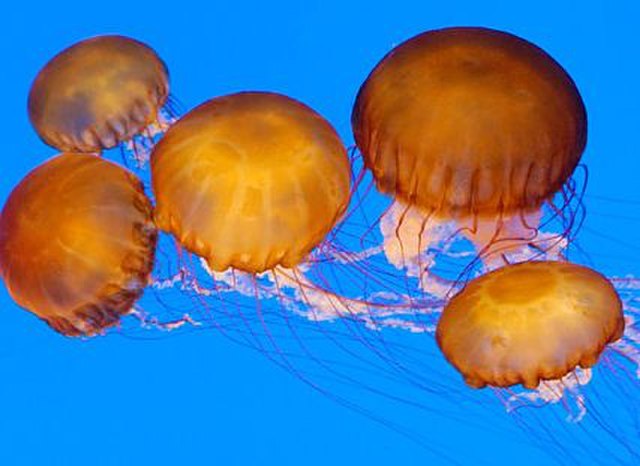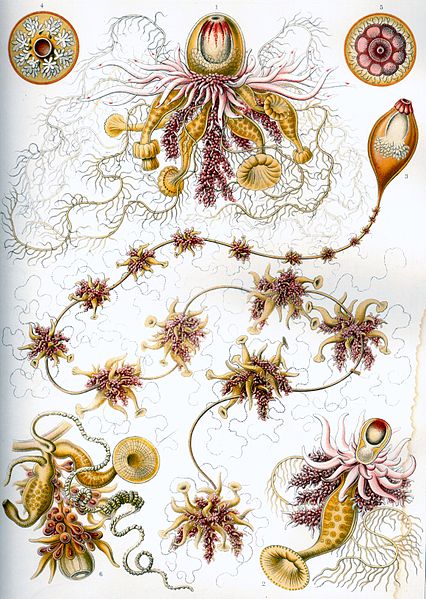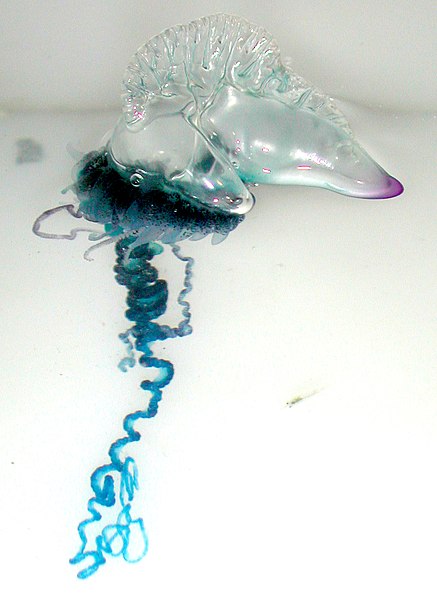Medusozoa is a clade in the phylum Cnidaria, and is often considered a subphylum. It includes the classes Hydrozoa, Scyphozoa, Staurozoa and Cubozoa, and possibly the parasitic Polypodiozoa. Medusozoans are distinguished by having a medusa stage in their often complex life cycle, a medusa typically being an umbrella-shaped body with stinging tentacles around the edge. With the exception of some Hydrozoa, all are called jellyfish in their free-swimming medusa phase.
Medusozoa
Polypodium hydriforme, parasites of obscure affinity
Pelagia noctiluca, a scyphozoan
An unidentified cubozoan
Hydrozoa is a taxonomic class of individually very small, predatory animals, some solitary and some colonial, most of which inhabit saline water. The colonies of the colonial species can be large, and in some cases the specialized individual animals cannot survive outside the colony. A few genera within this class live in freshwater habitats. Hydrozoans are related to jellyfish and corals and belong to the phylum Cnidaria.
Hydrozoa
The hydroid Tubularia indivisa, fertile, Gulen Dive resort, Norway
The highly apomorphic Siphonophorae—like this Portuguese man o' war (Physalia physalis)—have long misled hydrozoan researchers.
Limnomedusae like the flower hat jelly (Olindias formosa) were long allied with Anthomedusae and Leptomedusae in the "Hydroida".








